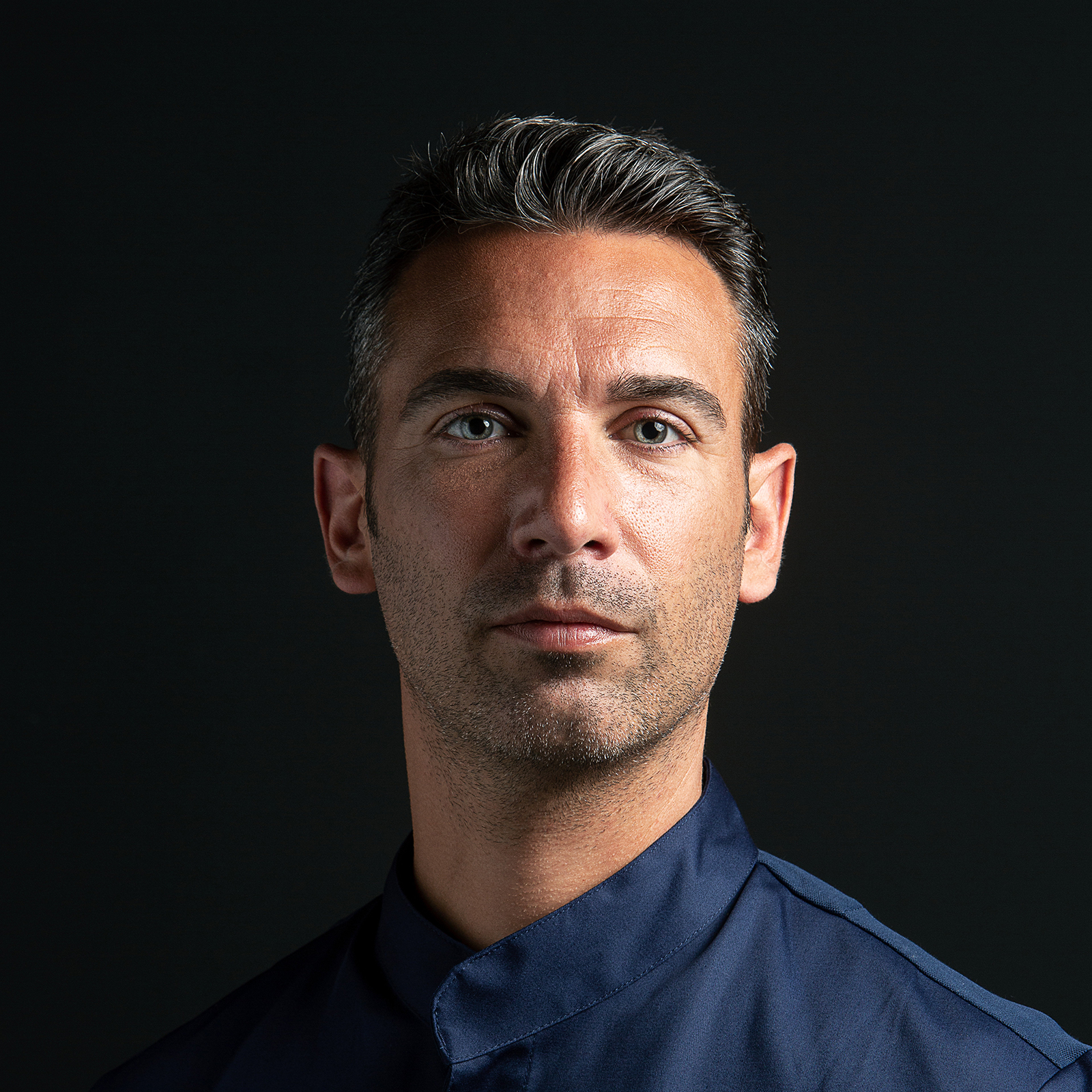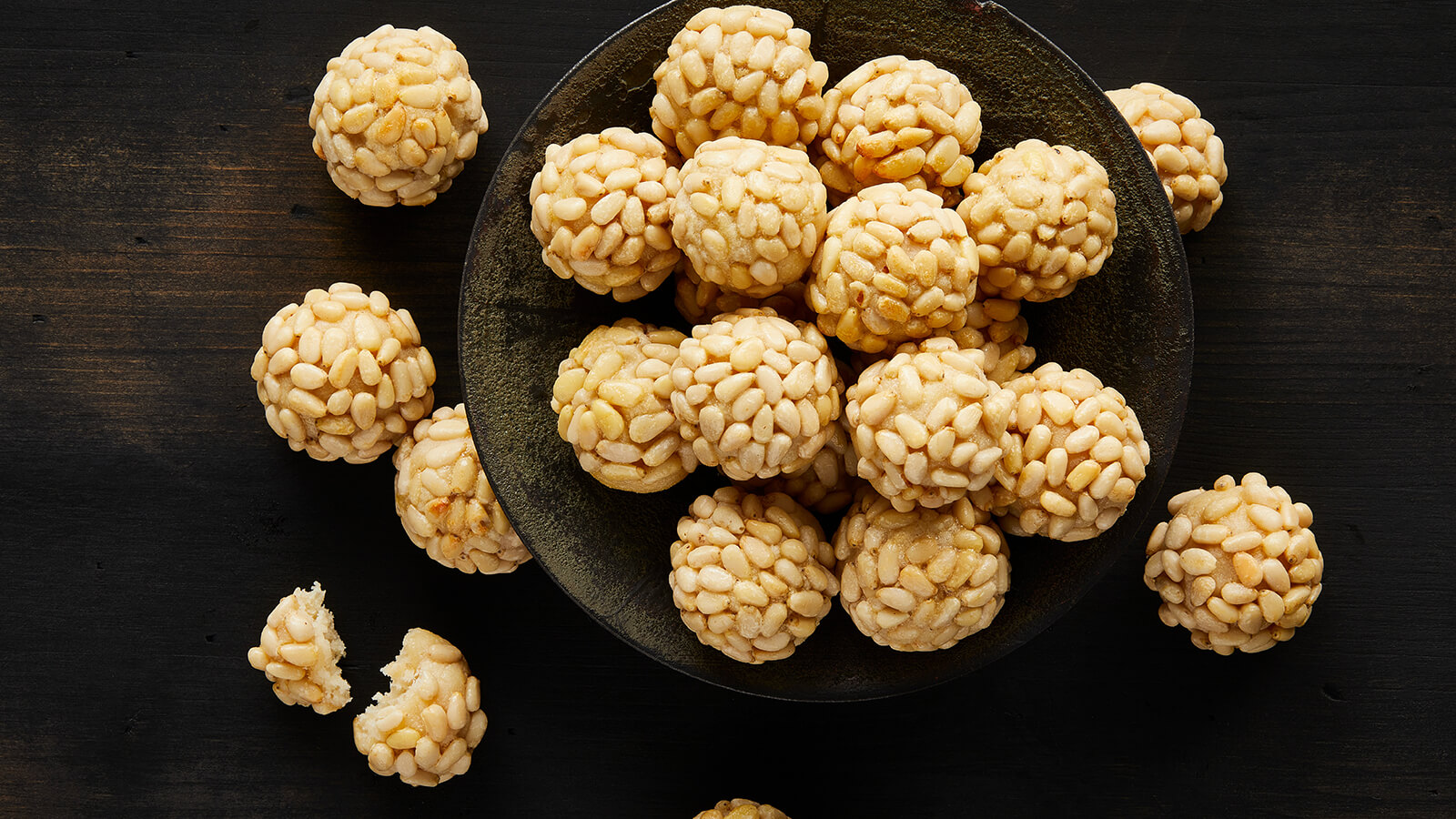
Meet Spanish Pastry Chef Xavi Donnay
 Traditional Panellets Recipe
Traditional Panellets RecipeWhen it comes to pastry, Xavi Donnay is giving the French a run for their money. The Barcelona-based chef runs the pastry program at the acclaimed three-star Michelin restaurant Lasarte, directed by Spain’s most-Michelin-starred chef of all time Martín Berasategui, and won World’s Best Pastry Chef Award last year. Xavi studied pastry at Barcelona’s Espaisucre Pastry School and trained under two of Spain’s most renowned pastry chefs: Jordi Butrón and Xano Saguer.
Inspired by Japanese culture, Xavi’s confectionary creations are innovative, whimsical and visually stunning. We were honored to chat with Xavi about growing up in Spain, his favorite ingredients and the special recipe he makes to celebrate el Día de Todos los Santos, or All Saints’ Day.
Q: What inspired you to become a pastry chef, and what are some valuable lessons and skills pastry school has taught you that you still carry with you?
When I was little, I watched my mother make cakes at home and I would help her. That's when I started to like pastry. She always preferred desserts over salty foods, and she passed that on to me. It was always clear to me that I wanted to study cooking, and ever since my first restaurant internship and experience with pastry, I never had any doubts.
I studied pastry at Espaisucre, where I developed my skills and was also encouraged to think and create for myself.
Q: Where in Spain did you grow up, and what do you love most about Spanish culture?
I was born and raised in Barcelona, a city that is less than two hours by car from France. Both have a history and love for gastronomy that I really appreciate, whether it’s traditional or creative.
Q: You have a diverse professional background, working in London, Hong Kong and Spain. How has your exposure to these cultures influenced your cooking and career?
Professionally, I am very influenced by my time in London, where I worked at Zuma Japanese restaurant applying a French technique. My time in that restaurant opened a range of possibilities because I discovered many new ingredients. Today, when I create a product, I always add an Asian touch because of that experience.
Apart from the ingredients, I also felt very attracted by the minimalist and perfectionist style of Japanese cuisine and, above all, a respect for the product. There are ways of working that are still present in my day to day.
Q: How would describe your style and approach to creating the unique and innovative pastries at Lasarte?
During the 11 years that I have been working at Lasarte, we have created a well-defined style of our own that has evolved over time. We try to create from an idea, a concept, a new technique or a combination of flavors.
Q: You were awarded the prestigious World’s Best Chef Pastry at The Best Chef Awards in 2020. How has the global recognition impacted your life and your cuisine?
What moved me the most was to see how happy people were for me and to feel that they were inspired by my success. Now I have more work, but I’m still the same person and continue to improve my craft.
Q: What are the essential pantry items in Spanish cooking and in pastry specifically?
Nuts are a staple of pastry, and we have a wide variety native to our country, including: almonds, hazelnuts, chestnuts and pine nuts. They allow me to use an ingredient that gives me a lot of play from square one. They can be made into everything from pralines to chocolates, and the end result is delectable.
Q: Who or what has been the biggest influence on your career?
Some of the first chefs to start making avant-garde restaurant pastries in Spain ̶ as Albert Adria, Martin Berasategui or Jordi Butrón, were always an inspiration for me.
Jordi was my teacher and he taught me a lot, especially how important it is to know ingredients well. His book Los postres de El Bulli was very important to me when I started out, and his book Natura is a work of art. Also, I’ve been working with Martín for more than 11 years and he never ceases to amaze me by his vitality, honesty and capacity for sacrifice.
Q: When you are not at the restaurant making mouthwatering creations, do you have a super easy, go-to dessert you make that satisfies a sweet tooth?
Yes, the Basque Burnt Cheesecake. I like it because it is a very simple recipe, you just have to mix the cream with the cheese, sugar and eggs by hand and get it the doneness that you prefer. You can put a cookie base, or not, and enjoy! I like that the result is creamy, but that it does not fall because it is liquid.
Q: Can you describe what a typical day of work running the pastry program at a three-star Michelin restaurant looks like for you?
First, I try to ensure my team does work marathon days. There has always been the belief that in a restaurant, you must work long hours (and not eat, not rest, etc.) to do well, but that is not true for me. If my colleagues are physically and mentally exhausted, they cannot perform 100%. I prefer to compress the schedule a little and work more rhythmically so my team can combine their work life with their social life, eat well and get good rest. Sometimes we make sacrifices, but it’s not always the case.
We have two services a day, lunch and dinner, and each service lasts a minimum of 3 hours, from 1:00 p.m. to 4:00 p.m. and from 8:00 p.m. to 11:00 p.m. In a 3 star Michelin restaurant, each service is very demanding - everything has to be perfect and there is no margin for error, and it is not easy.
Q: Halloween in Spain is not as popular as it is in the U.S., but can you tell us about some of the traditions of All Saints’ Day? What is its significance in Spanish culture?
Halloween is becoming more popular in Spain, but traditionally we celebrate All Saints’ Day on November 1st to honor lost loved ones. We also have La Castañada festival featuring special dishes associated with the holiday, including panellets, saint’s bones and wind fritters. The streets are filled with kiosks where you can buy paperinas—roasted sweet potatoes and chestnuts wrapped in newspaper.
Q: Are there any American desserts you love or find interesting?
Yes, of course! Pecan pie, brownies, bananas foster, pancakes, donuts, cookies— these are all things I love to eat at home and share with my family. I think the best thing about these desserts is that they have the potential to be so delicious and are easy to make, which gives them universal appeal.
Q: Do you have any traditions or traditional Spanish pastries you like to make for the holiday?
The most traditional and popular recipe I make at home is panallets (“little breads”). It’s a tradition I hope doesn't get lost over time. The more authentic ones have pine nuts, but they can also be made with chocolate, coffee, coconut or Catalan cream. They’re sold in pastry shops and eaten as a family or in parties. Pastry shops, apart from making the classic products, have also evolved and use inspiration from Halloween to make individual cakes in the shape of skulls, eyes, graves, et cetera.
Q: What is the significance of these little breads?
It is believed that they originated in medieval Europe when small loaves were carried to the graves of the departed on All Saints’ Day, much like Mexico’s traditional pan de muerto or bread of the dead.
 Traditional Panellets Recipe
Traditional Panellets Recipe
